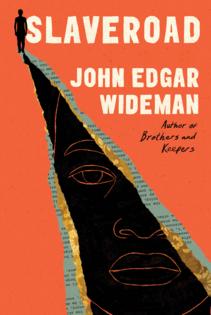Review: Writing titan John Edgar Wideman traces the 'Slaveroad' that leads all the way up to today
Published in Books News
John Edgar Wideman, acclaimed author of more than 25 books, has written yet another full-hearted volume. It’s called “Slaveroad,” a genre-defying and clear-eyed meditation on the roiling effects of transatlantic slavery on past and present lives, including his own.
But why now in this century? How much more needs to be said about that unthinkable middle passage, that “flesh railroad … consisting of body after African body … enslaved bodies, one after another, laid head to foot, foot to head, to create a slaveroad crossing the Atlantic Ocean reaching from Africa to this New World?”
More, 83-year-old Wideman insists, as he reflects on the coined word that gives his book its title — rife not only with symbolic meaning but also with collective and individual pain, the effects of which remain like an unhealed wound, like an “unsinkable confusion that buoys and drowns,” in Wideman’s long and illustrious life.
In much of his fiction and nonfiction, including his well-received memoir “Brothers and Keepers,” the MacArthur “genius” grant recipient has traversed this particular thematic road, revealing hard, unsettling family secrets along the way — his brother’s 44-year stint in prison for a role in a robbery gone wrong; the conviction of his son for murder at the age of 16; the death of a nephew from a gunshot; and the poverty and racism that dogged the mostly Black neighborhood of Homewood in Pittsburgh, where he grew up. (”The Stories of John Edgar Wideman” is a good place to start if you’re looking to read his fiction, a fair amount of it set in Homewood.)
In “Slaveroad,” as a writer who is “approaching [his] own end,” Wideman returns to some of the same people, including friends and former students.
He jokes about his “high-handed, one-sided manner of exploiting [their] stories.” He cannot shake them loose from his writerly impulses, even if he risks repeating himself. He argues that all the stories in the book, some of them also channeling historical figures like the mixed-race Presbyterian missionary William Henry Sheppard and an enslaved woman named Rebekah, serve to not only artfully make sense of his own experiences as a Black man but also to foster wider understanding.
“My goal is to revisit and reify moments of my life that haunt and form me. Form all of us,” Wideman writes, his characters and narrators often melding into one, his syntax fluid and frequently fragmented and his brilliant riffing on words a kind of mesmerizing dance across the page.
Readers in search of a plot in “Slaveroad” will not find it. Each of its 22 chapters transports us, sometimes in just a few pages, from colonial Congo to the present-day beaches of Brittany, France, to New York City. There is a searching quality to Wideman’s finely tuned prose as he pushes against the limits of what’s expected.
By mining the depths of our shared history across place and time in his impassioned “Slaveroad,” Wideman invites us to come along with him on a journey (or a daring, self-excavating exercise?) both immeasurably rigorous and rewarding.
____
Slaveroad
By: John Edgar Wideman.
Publisher: Scribner, 208 pages, $28.99.
©2024 The Minnesota Star Tribune. Visit at startribune.com. Distributed by Tribune Content Agency, LLC.













Comments